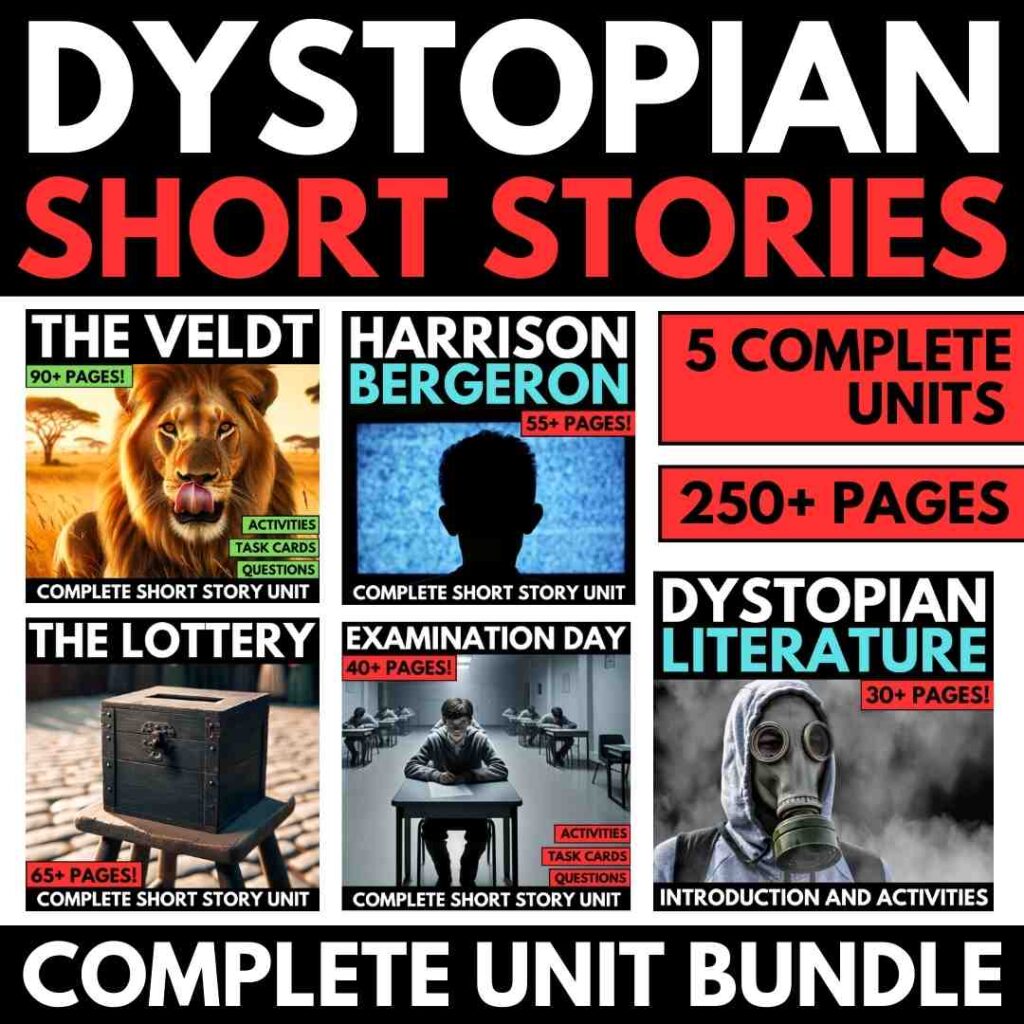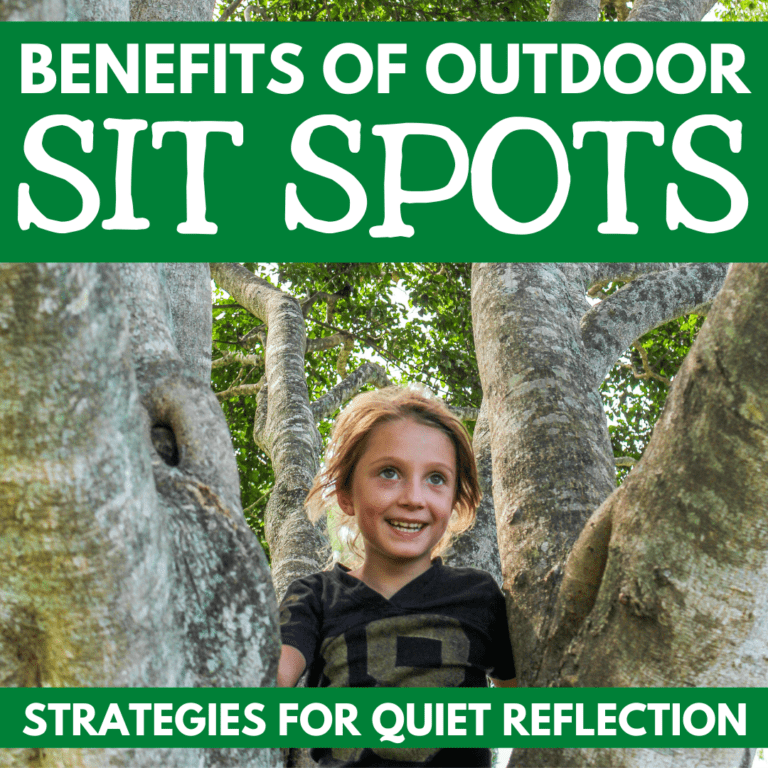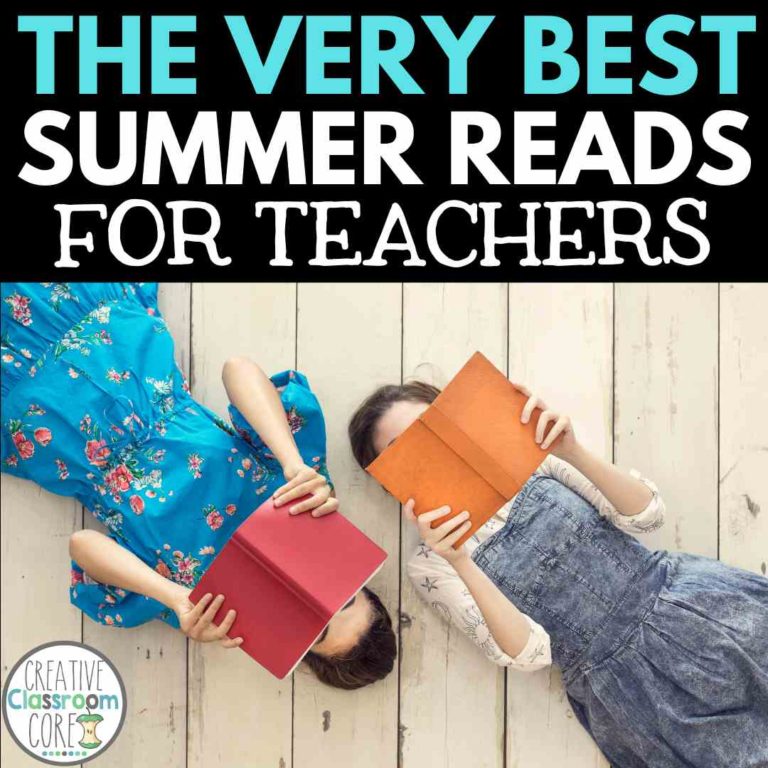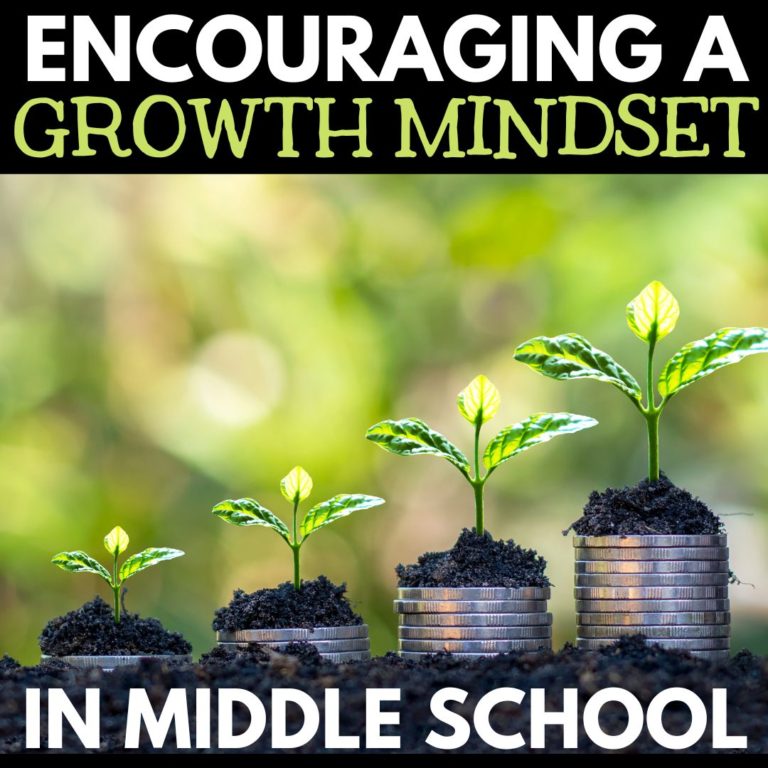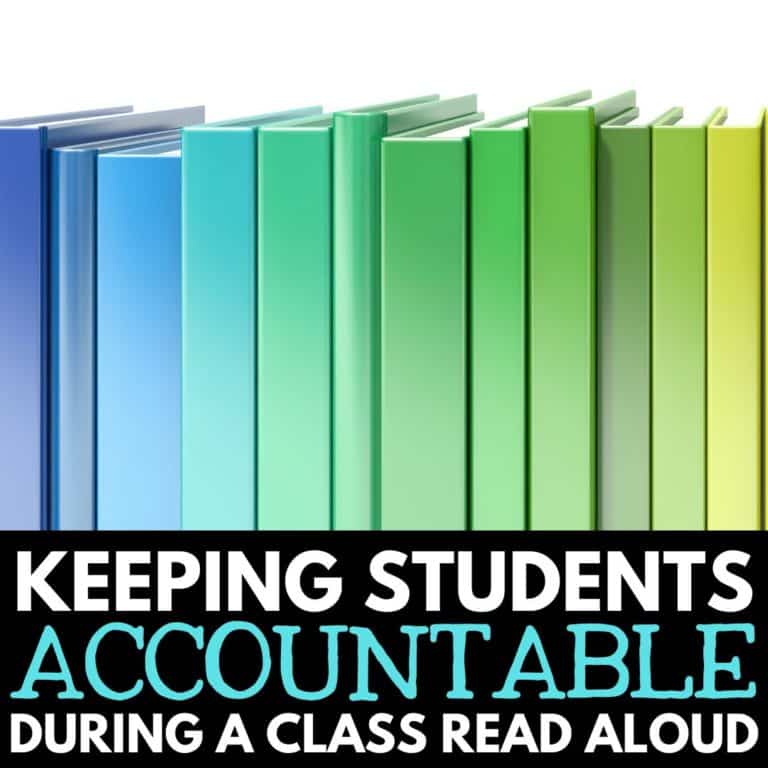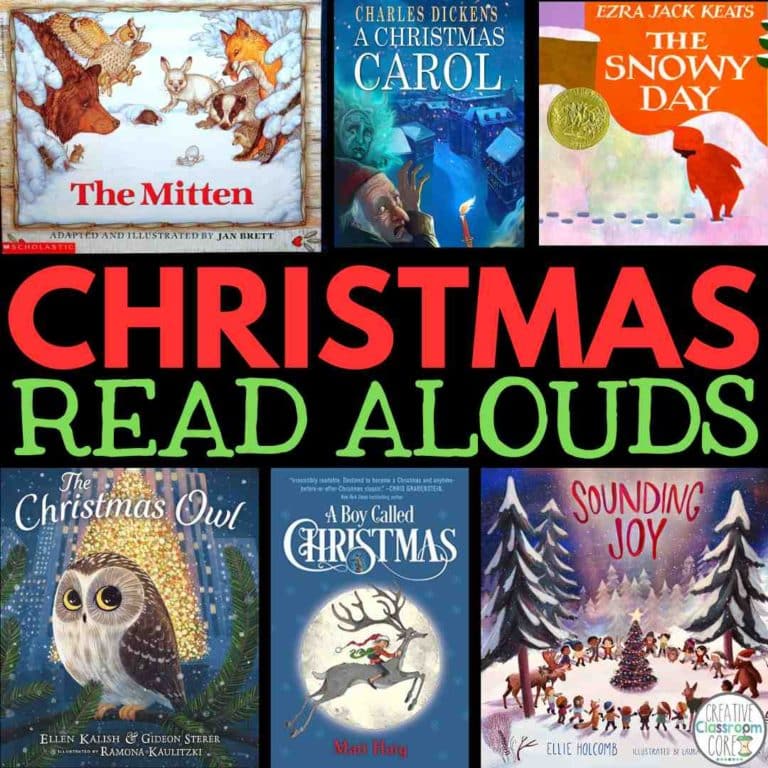9 Dystopian Short Stories for Middle School
By MARISSA DESPINS Updated March 8, 2024
As I mentioned in my last post, Dystopian fiction is an absolute favorite genre for my middle school learners. It can be a real challenge to engage this grade level with reading. Because of this, I am more than happy to feed their desires by adding a variety of dystopian short stories to our reading roster. We know that students are much more likely to engage with text they find intriguing. Because of this, including these stories makes my job as an ELA teacher a whole lot easier.
Looking for some print and go Dystopian Short Story resources that you can use right away in your classroom? Click on the image or button below to see all of the Dystopian Literature resources available in my TPT shop!
Why should I include Dystopian Short Stories in my ELA curriculum?
In addition to engagement, one of the big benefits of including dystopian literature in your ELA curriculum is that it provides ample opportunities for real world connections and deep classroom discussions. In my last post, I discussed some of the key characteristics of dystopian literature. You will find that students can easily spot these characteristics rearing their heads in our own world. The world we live in today can feel very dystopic at times!
Favorite Dystopian Short Stories for Middle School
In this post I share 9 of my all time favorite dystopian short stories for middle school. I hope you are able to find something to add to your reading list!
“Examination day” by Henry Slesar
This short story’s dystopic version of the future makes it a hit with students interested in this genre. In the story, a bright young boy named Dickie is sent to write an exam. In the story, all children of the future are required to take the exam. The story ends with a jolting twist that lends itself to some interesting classroom discussion and writing activities about the nature of intelligence. In this haunting version of the future, all intelligence is regulated.
“Harrison Bergeron” by Kurt Vonnegut
I love pairing this story with Slesar’s “Examination Day”, as both stories are set in the future and discuss similar themes about intelligence. In this story, the people of the future have been given “handicaps” to make sure that everyone is equal. The story picks up when young Harrison Bergeron takes over a television program, revolting against the handicaps he has been given. This story lends itself to a great discussion about political propaganda. Because of this, I usually end the unit by having the kids create their own propaganda posters for the main character in the story.
“A Sound of Thunder” by Ray Bradbury
Set in the future, time travelers on a hunting expedition visit prehistoric times to shoot and kill a Tyrannosaurus Rex. The story explores the concept of the “Butterfly Effect”, where one small action in the past can have massive consequences in the future. Students who have seen Groundhog Day will be familiar with the concept, but I find this story to be much darker.
I have students complete a plot diagram to go along with this story, and make notes on the actions of the characters that make an impact on future events. This story is a bit longer than some of the ones I mentioned above. However, I have found that the kids get hooked into the story right from the start. Because of this, they do not mind the length as much. This story is a great way to hook some of your reluctant adolescent boys.
“The Veldt” by Ray Bradbury
Even though this story first appeared in the 1950’s, it is full of connections to our modern world. This is a haunting story about a family with hopes of using technology to simplify their lives, only to find it go horribly wrong. There are a lot of great classroom discussion opportunities here about parental roles and the effects of technology integration.
“There will come soft rains” by Ray Bradbury
This popular Bradbury short story revolves around a ‘smart house’ left behind in the wake of a nuclear explosion. Connections to our world today abound, especially with the integration of things like smart phones, Siri, and Alexa.
“All Summer in a Day” by Ray Bradbury
When Margot moves from Earth to the rainy planet of Venus, she is bullied by the other children who are jealous of her for seeing the sun. As the first sunny day the planet has seen in many years approaches, the bullying intensifies, leading up to a heartbreaking finale. This is a great story to use when discussing bullying, as students tend to feel quite strongly for Margot, and can often make connections to their own lives. Also, as it is set on a distant planet, it is a great story to use when discussing setting.
“The Scarlet Plague” by Jack London
While technically a novella, no dystopian short story list is complete without this classic tale. Through the story, London uses an epidemic to reflect on the cultural and socio- economic impacts of fear. This story is particularly timely for today’s generation, as students will be able to draw many comparisons to the recent pandemic.
“The Lottery” by Shirley Jackson
In Shirley Jackson’s “The Lottery”, the villagers of a small town gather in the town square for the annual tradition of the town lottery. However, as the story comes to a haunting conclusion, the reader realizes that this lottery is one that the town members don’t want to win.
This story is a classic for good reason, as it is both suspenseful and gripping. It is a top favorite with my middle school learners. Students familiar with “The Hunger Games” novels will be able to draw connections to “The Reaping” ceremony.
“The Machine Stops” By E.M. Forster
This eerily relevant story discusses a futuristic society where humans are dependent on technology, leading to diminished human connection. Students can easily connect their smart phones, internet connections, and Instagram accounts to “The Machine”, making it a story that promotes fantastic classroom discussion.
Looking for more Activities for dystopian Short Stories?
Check out my complete dystopian unit bundle by clicking on the image below.
Want to read more about dystopian Short Stories?
Check out my previous post on dystopian literature here.
Interested in signing up for my email list?
If you are interested in signing up for my email list, you can do so by clicking on the link below. I periodically send out emails with free resources, teaching tips, and exclusive deals. Signing up will also give you immediate access to some of my best selling Interactive Notebook resources – foldable activities, graphic organizers, and other fun activities.

